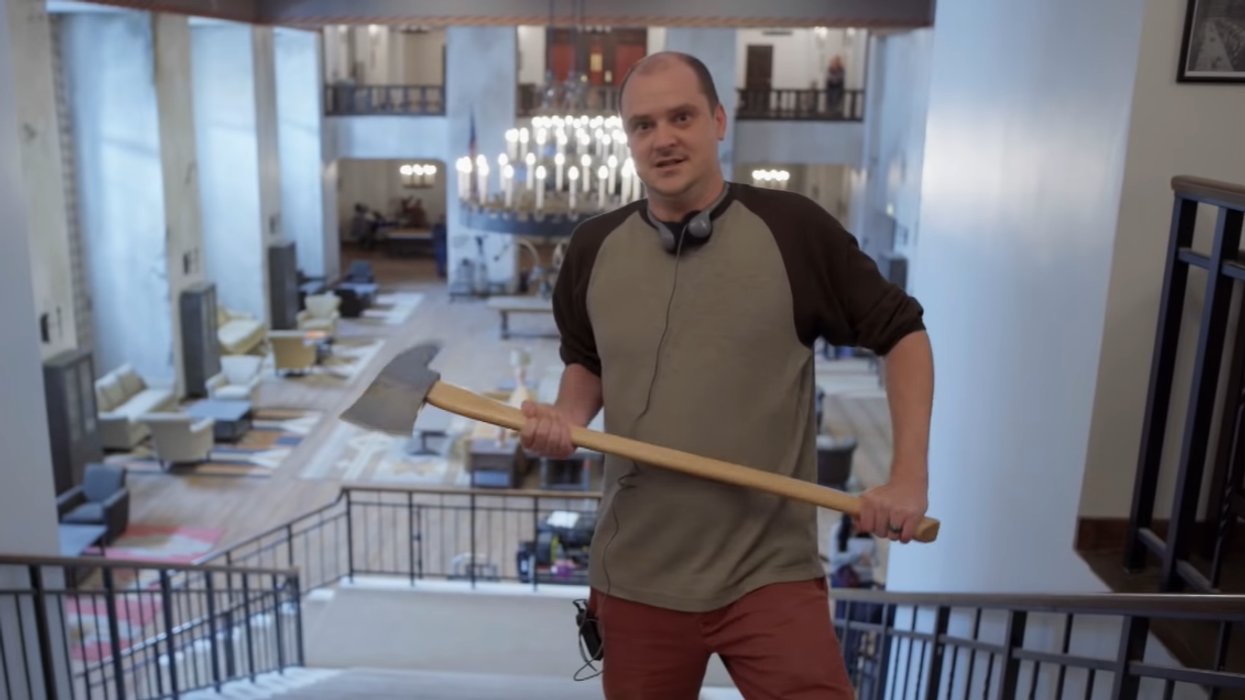How the 'Doctor Sleep' Crew Rebuilt Kubrick’s Overlook Hotel
The director and production crew of Doctor Sleep were already working in Kubrick's shadow, but they also had to build his hotel, too. Find out how.

Stanley Kubrick was a meticulous genius who put so much attention and detail into his films, that we're still uncovering cool things he's done. They've had entire museum displays showcasing his notes and his legend grows more and more each year.
All this is to say when you tread in Kubrick's tracks, the pressure is on and people will notice. Director Mike Flanagan was nervous when it came time to film Doctor Sleep, the sequel to The Shining. But lucky for him, he had a very dedicated production crew that was willing to help him pull off the impossible.
How the Doctor Sleep Crew Rebuilt Kubrick’s Overlook Hotel
When it came to iconic hotels, the Overlook was right up there with the one owned by Norman Bates. Flanagan knew there were a lot of people ready to whip out the microscopes to examine what he would do with Doctor Sleep.
So he put everything he had into it. And everything Kubrick had, too. The Kubrick estate had the physical blueprints and design elements from the original film. They lent them to the crew and the real work began. Speaking at a Q&A in London, Flanagan said:
“The interesting thing was, he didn’t always follow his own plan, so when we were down the road building this we were like, ‘This isn’t what it was like in the movie. To imagine what it’s like, to imagine why Stanley Kubrick put his lens in this specific place in the Colorado ranch, we got to do that. We got to put the lens there in the exact same set, the exact same dimensions, and if there was ever a question to why using this angle, this lens… we got to ask him in a way… And without fail, over time, I would move the slider over this way and check it out and we would find out forensically why his decision was the best one, why the symmetry was best served… why it is OK to cheat an actor off their mark… why it is OK to forego the continuity because the image was so much better. That kind of forensic film school -- I can’t imagine having another chance like that - we were incredibly lucky to be able to do that. And there was a sense too that if someone else had made the film, as a fan, I would be scrutinizing every frame. I would hold them to the standard which would be pretty insane about the level of detail - making sure they got it right, so there was the assumption that absolutely we had to be as accurate as possible. We didn’t get them all right - we tried but it’s really hard to do, it’s very sad."
That is an all-encompassing answer, but where did it lead? To try to get it right, he and his production designers started with the easy parts: Using three of Kubricks shots from the original. Flanagan spoke with BuzzFeed and told them:
"The shot of the water and the island, the two shots after it of the car going on the mountain. We cleaned them up, degrained them, made them nighttime, and added snow. But those are the only shots from Kubrick’s film."
Now that he had elements from the movie and from Kubrick's estate, he had to get building.

But just because you can build the sets doesn't mean they'll be perfect. When it came to the Overlook's iconic red and orange carpet, they had to measure exact dimensions and hope for color matches. Even after all that effort, they still were forced to work on the color in post.

Why? Because Spielberg had recently done work recreating the Overlook for Ready Player One.
Producer Trevor Macy told Buzzfeed: "He (Spielberg) had a lot more control than we did because he could change anything. But we felt like for this movie it was important to use practical sets. He was using principally small pieces for the actors to interact with and then did big (digital) set extensions. We built most of it on the sets in Atlanta."
Various members of the crew even walked around with iPads and compared what they had with The Shining.
Flanagan is proud of what they accomplished, but knows it'll never be perfect. But since the movie is, in part, about about memories and visions, he hopes any inaccuracies or tiny problems just add to the experience.
What's next? How 'Doctor Sleep' Recreated Kubrick's Sound Design
Doctor Sleep producer Trevor Macy reveals how he and director Mike Flanagan made their Stephen King sequel sound like The Shining.
Click for more!















